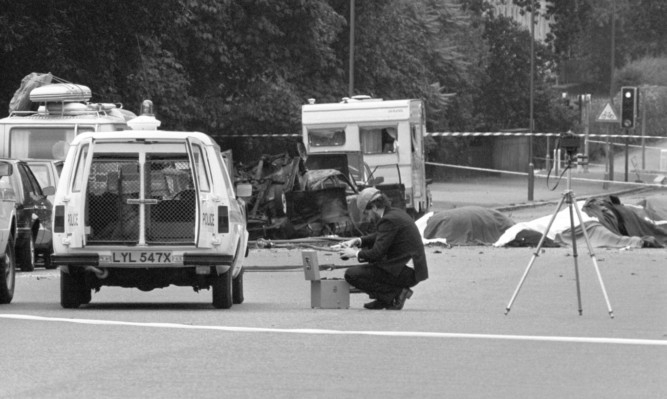A 61-year-old man has appeared in court charged with the murder of four soldiers in the 1982 Hyde Park bomb.
John Anthony Downey, of County Donegal, Ireland, is accused of being responsible for a car bomb left in South Carriage Drive.
The explosion killed four members of the Royal Household Cavalry as they travelled from their barracks to Buckingham Palace. He was arrested at Gatwick Airport on Sunday.
Wearing a grey jumper over a white shirt, grey-haired Downey spoke only to confirm his name, date of birth and address during the short hearing at Westminster Magistrates’ Court.
He briefly greeted his solicitor Gareth Peirce from the dock. He is charged with murdering Roy John Bright, Dennis Richard Anthony Daly, Simon Andrew Tipper and Geoffrey Vernon Young.
They were among soldiers who were caught up in the bomb attack as they rode through Hyde Park to the Changing of the Guard. Four men and seven horses were killed and a number of police officers and civilians were injured in the blast.
Downey has also been charged with intending to cause an explosion likely to endanger life. He will next appear at the Old Bailey on Friday.
Under the Good Friday Agreement, anyone convicted of a terrorist offence which took place before April 15 1998 and the signing of the agreement can request to be transferred to a prison in Northern Ireland and then apply to the Sentence Review Commissioners to be released after serving two years in custody.
